Dominion's Hidden Lore
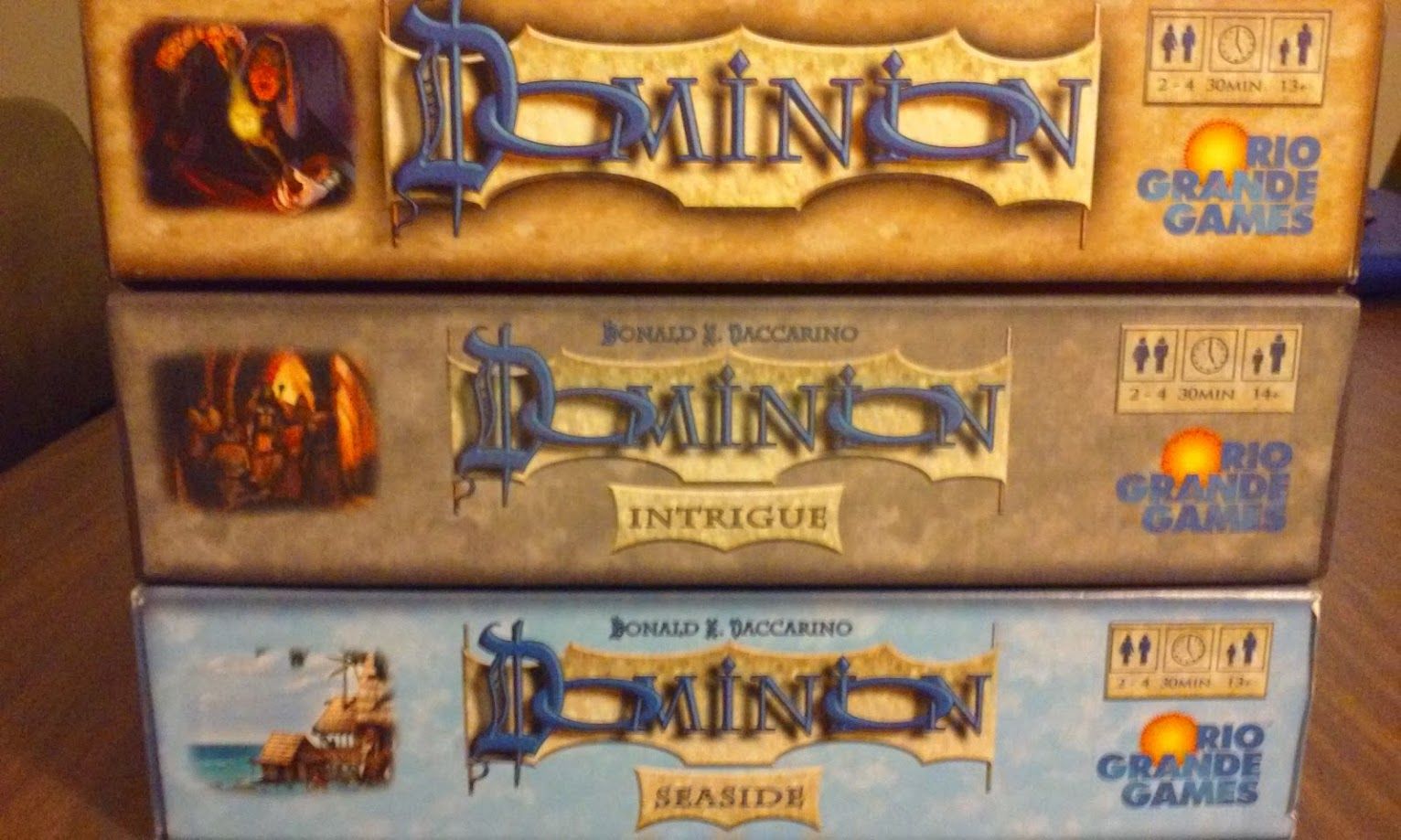
A few theories about the history of the realm.
12/28/2016
I just need to draw this one card.....Dang. I'll get it next time for sure though.
Posted on 1/5/2017 by Tim Rice
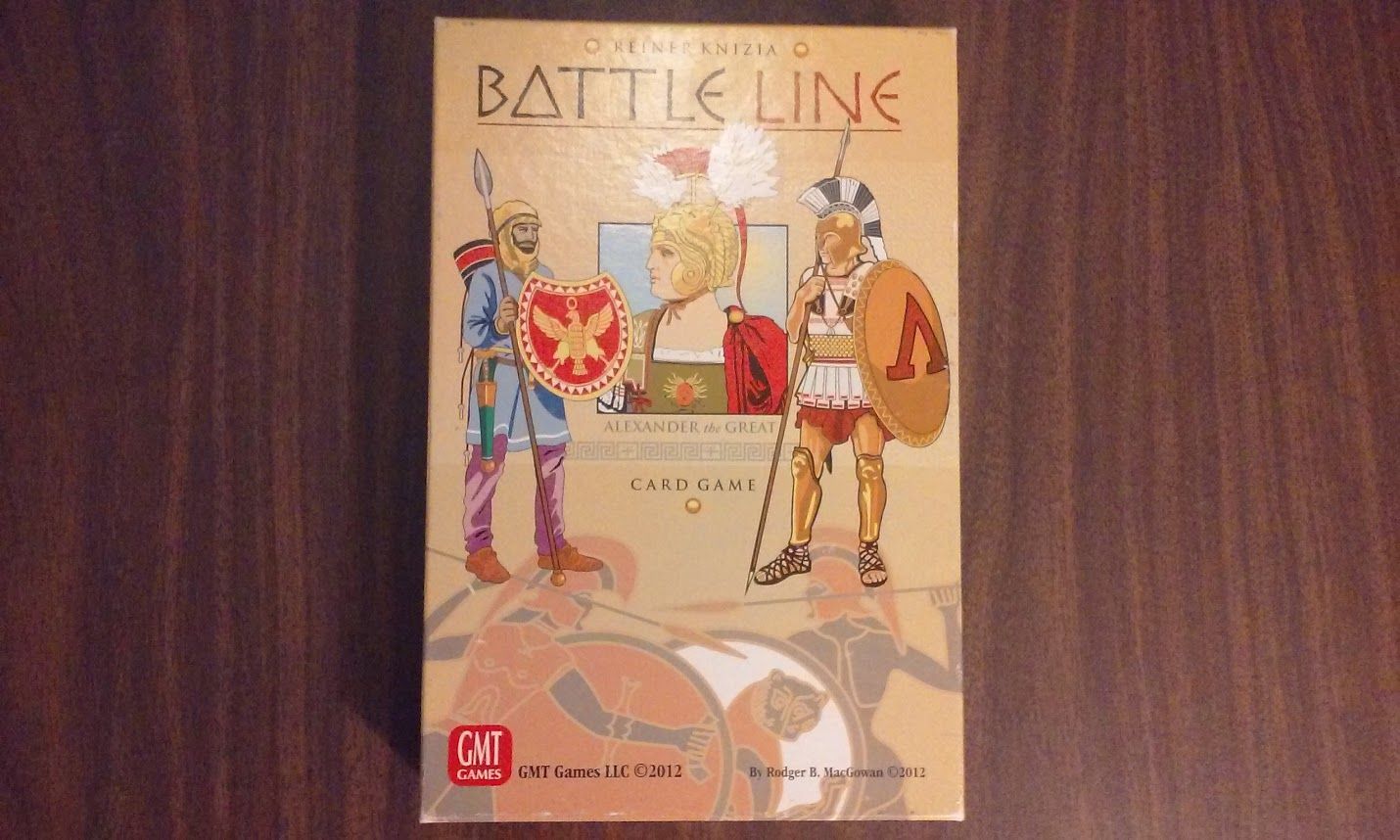
Today I’ll be covering Reiner Knizia’s two-player card game, Battle Line. I’m always on the lookout for two-player games because my fiancée and I play a lot of games together. When I acquired this game though, it really wasn’t on my radar at all. I had heard good things about it, but I just wasn’t that interested because the game looked really bland… Another card game with nothing but colors and numbers? Even the soldiers on the cards look bored…
My fiancée got it for me as a surprise birthday present (she boldly drifted away from my BoardGameGeek wishlist), and in this case I’m very glad she did because it is probably one of our most played games at this point. It doesn’t look like much, but it only took me one play to realize that this game was something special. We’ll probably still be playing it for years to come (even though she always beats me at it...).
Battle Line is a game about securing your position on the front line and organizing your troops more efficiently than your opponent. There are nine flags to contest, and (for each flag) if your 3-card formation is better than your opponents’ adjacent formation, you win that flag. Sounds pretty simple, but there’s a lot more to this game than what lies on the surface.
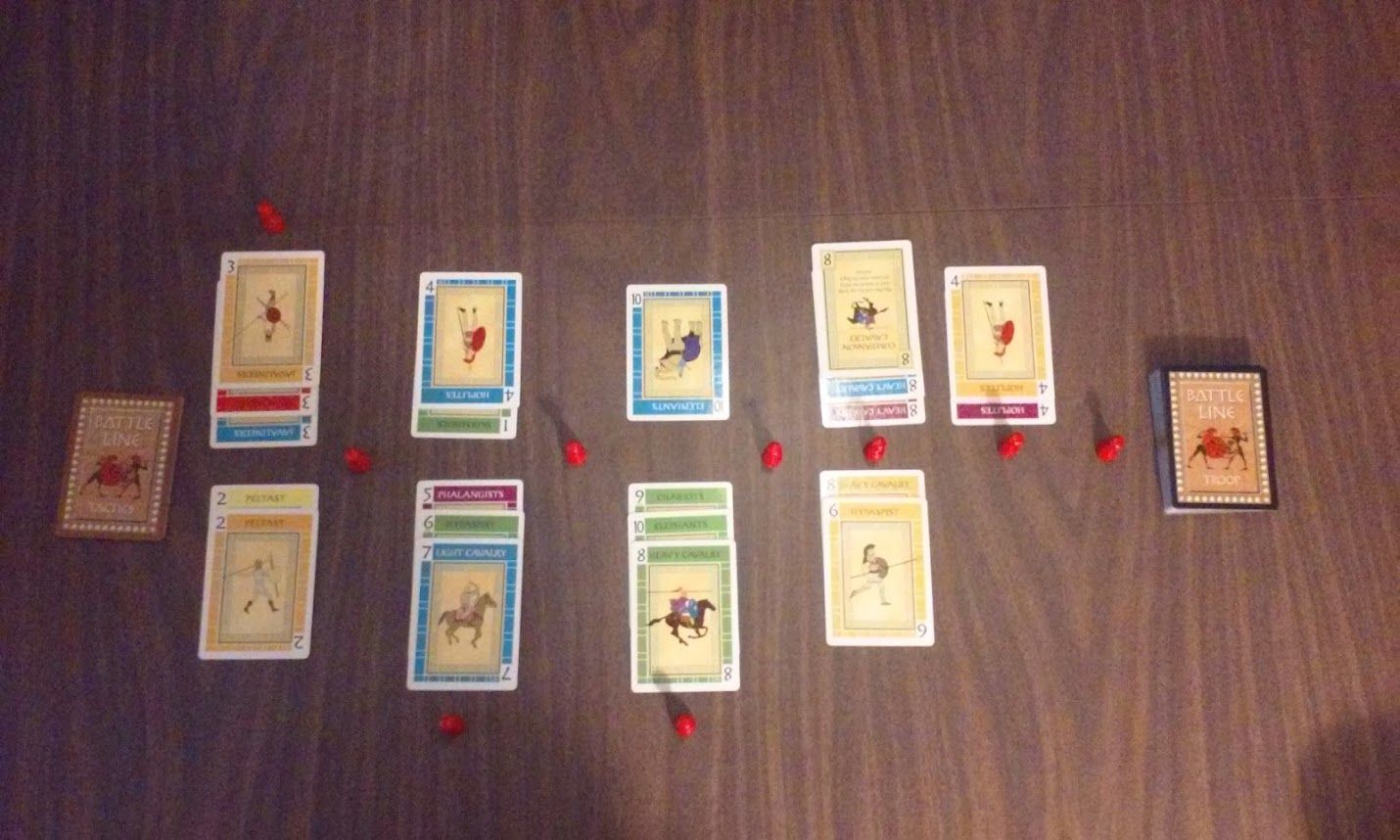
To start, players set up the nine flags in a line between them, shuffle the two decks, and draw seven troop cards each. The troop cards come in six different colors and range from 1 to 10. There is also a separate deck of 10 tactics cards which allow the player to take a unique special action when played.
On their turn, a player can choose to either place a troop card in one of their available formations (only three troops are allowed per formation) in front of one of the flags, or play a tactics card. After a card is played, the player can choose to draw either a troop card or a tactics card.
A flag is resolved when both players have complete 3-card formations on their sides of the flag OR one side has a complete formation and it can be proven using the cards on the table that the opposing formation has no chance of beating it (this is a very important rule). To determine the winner of the flag, a poker-esque ranking system is used. From most powerful to least we have:
If both players have the same formation on a flag, the formation with the highest value sum wins it. If that’s the same, the first player to play the formation wins it.
A player wins when he/she captures either five flags, or three adjacent flags.
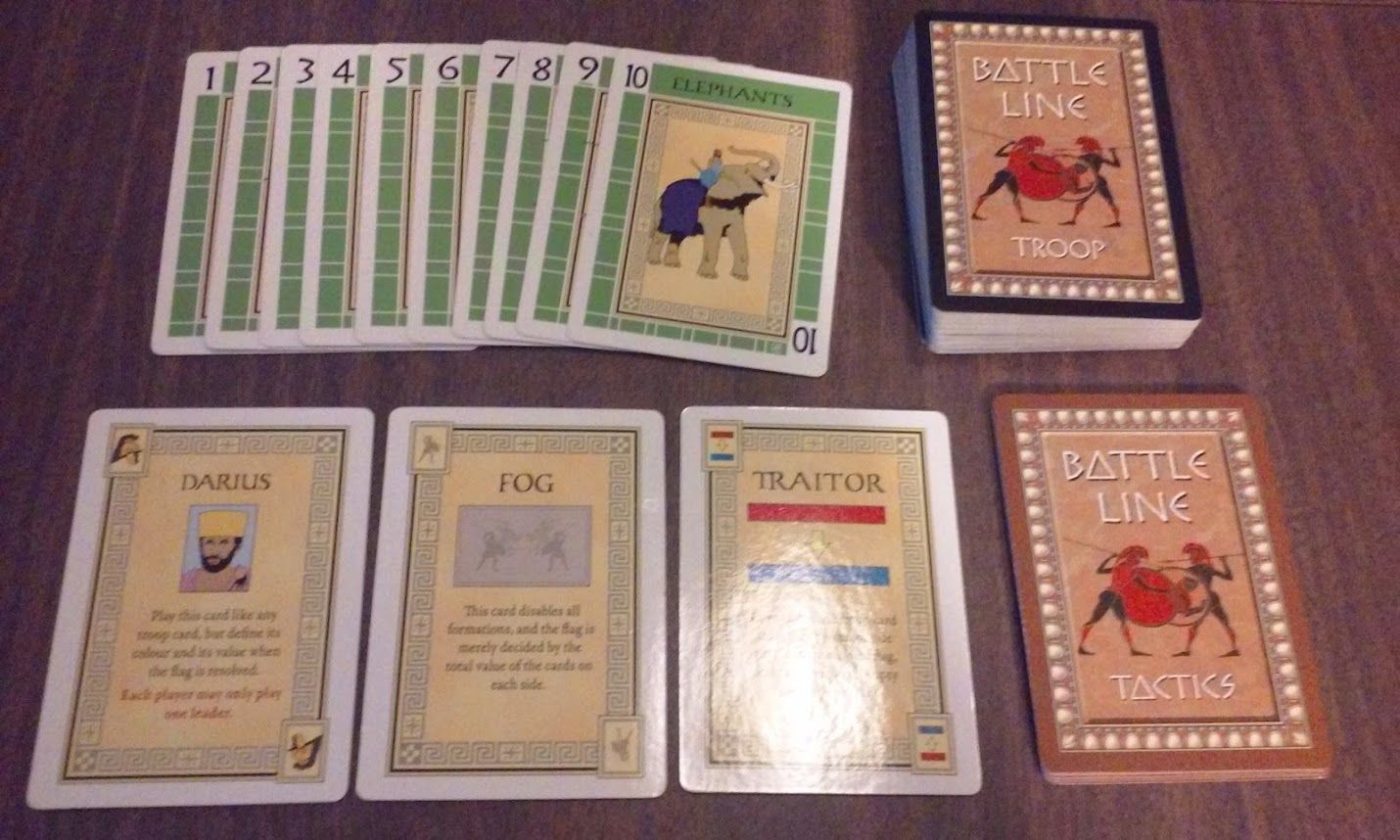
This is a perfect example of a huge game in a small package. The rules aren’t complex at all, and there are hardly any components, but it can be a bit of a brain-burner if you’re not careful. There is a lot of depth here. It isn’t just deciding which card to play and where (63 options each turn already), you have to consider your opponent’s plays, timing is essential, and you often have to figure out which flags you have the best chance of winning (because you’ll be counting on draws a lot of the time).
I’m not trying to say that this is a pure strategy game though, because it definitely isn’t. The luck of the draw is very real in this game and although you can mitigate some of it, you’ll still get screwed sometimes. This is especially evident in the tactics cards. Some of the cards are very situational and hardly useful while others are clearly overpowered. Each draw in this game is crucial, so if you draw a useless tactics card, it can be a huge swing in your opponent’s favor (and vice-versa). For this reason, I usually prefer playing without the tactics cards. They do add some variety I suppose, but I think they take away from an otherwise elegant experience.
The thing that really opens this game up is the mechanic where, if there’s enough evidence on the board, you can claim a flag even if the opponent’s formation isn’t complete. This creates constant engagement by both players because every single new card constricts the game state (because there are now less possible formations). Missing a flag claim is a huge deal because it allows your opponent to throw away a useless card, and every slot in this game is essential. It creates situations where you don’t want to play a card that you know your opponent needs, and now you have to consider the best time to play a crucial card as well. Needless to say, there’s an awful lot to think about.
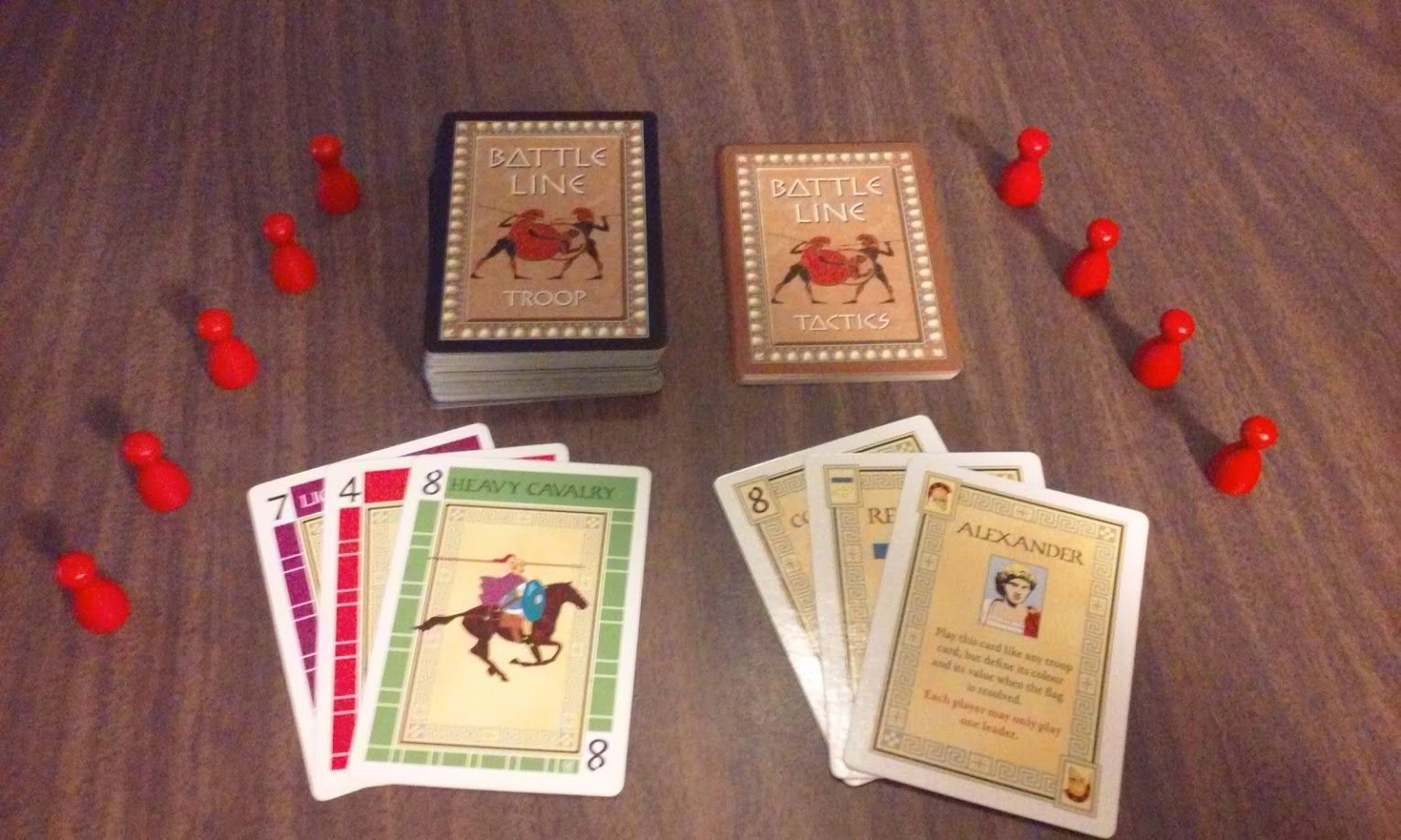
I already mentioned this in the intro, but this game’s graphic design really isn’t doing it any favors. The art quality isn’t all that important in a game like this, but I do think that if the game looked a little bit better it would have much more success than it does. The rulebook is also distinctively bland. It’s a black and white sheet of paper folded in half. The rules are clear and functional, however, and that’s what’s important. Basically, if you’re looking for a good-looking game, look elsewhere.
The ancient battle theme works well for this game and makes sense. I like the idea of allocating troops to strategic locations and outsmarting the enemy general. There isn’t really a reason to use the thematic names for cards and formations that they include in the rulebook, but they’re there if you like that sort of thing.
Apparently Knizia didn’t need much to create a deep and engaging gaming experience – just a deck of cards and some pawns. If you’re looking for a 2-player game that you can really sink your teeth into, but is also quick and easy to set up, this is about as good as it gets. The visuals are lacking, but you’ll be so busy thinking about your next move that you won’t even notice. I’ve played it dozens of times and I’m not bored with it yet, so that says something. I highly recommend it.





Thanks for reading!